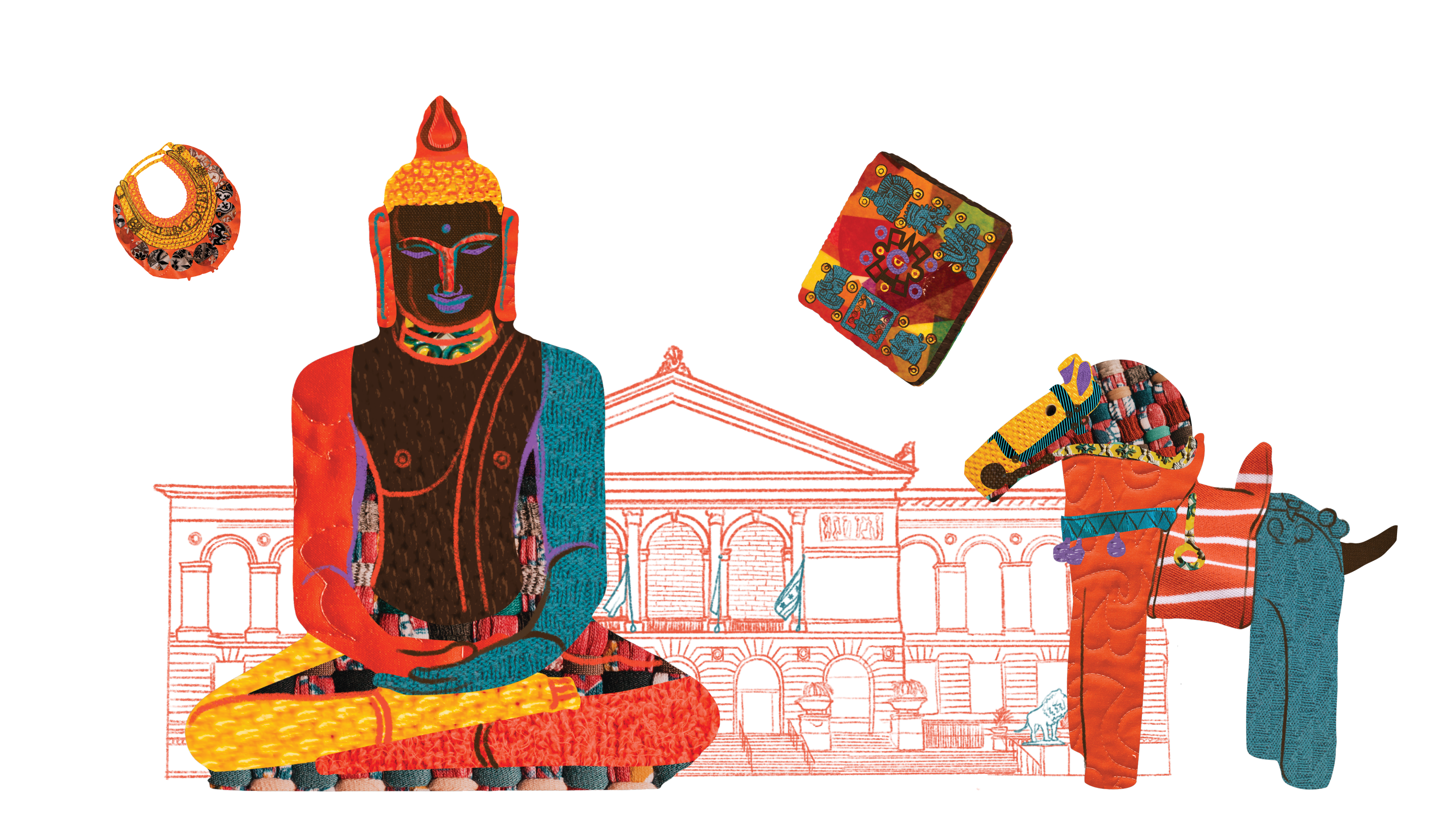
Born and raised in China, strolling along the Art Institute of Chicago sometimes evokes a peculiar sensation in me. As I stand there, watching the Museum’s meticulously designed beams of light gracefully caress the artifacts that have journeyed through the annals of history, a profound feeling of déjà vu courses through my being. In these softly illuminated corridors, where classical ink paintings and fragile aristocratic ceramics repose in their silent slumber, it is as though I have traveled back to my homeland in a flash. With my breath fogging the glass, I yearn to listen to the whispered tales embedded within these relics: How did artists create them? How did they travel across oceans to the Western world? Were they gifts of friendly diplomacy, coincidences of commercial trade, or the result of historical conflicts?
After talking with students on the School of the Art Institute of Chicago campus, I firmly believe that the feeling I experience within the Museum is not mine alone.
“While mixing cultures is an interesting sight, I can’t help but think about the history behind these artifacts. If they were imagined as living objects, would they have felt tired and homesick during their travels?” Yuyu He, a first-year painting post-bac student from China, said. “It can also evoke a sense of loss as if a part of our collective memory and identity has been removed from its rightful place. These masterpieces are not just objects but living symbols of a nation’s cultural heritage.”
A first-year Chinese graduate student from the Design for Emerging Technologies Department who chose to remain anonymous for privacy reasons said, “I am glad that the artifacts are preserved well and avoid being destroyed in the time of political turmoil, but I still can feel certain regrets about it being lost abroad. It’s a feeling of longing, a sensation that their own cultural identity is, in a sense, held hostage by circumstances beyond their control.”
Kristen Lee, a first-year MFAW student from Jamaica, said her emotions regarding the foreign artifacts were mixed.
“It would be delightful if no artifacts were looted, but it would also leave a certain cultural representation missing from prestigious museums. It is certainly meaningful to have global masterpieces displayed in the museum and to be available to the public but in an ethical way. Museums should ask the origin community for permission to avoid misinterpretation,” said Lee.
A first-year undergraduate student from China who chose to remain anonymous for safety reasons told F, “Seeing my country’s most precious cultural treasures displayed in museums in foreign lands can be a reminder of the historical injustices. I feel upset that communities have been stripped of their heritage, their stories, and their voices, as these objects are displayed far from their places of origin. Especially since some of the exhibits don’t have prominent markings on them indicating their country of origin. I doubt that museums show proper respect for exhibits in such a context.”
Purchasing tickets to visit a museum in a foreign land and encountering objects that bear significance to one’s own culture can be an emotionally charged and at times deeply traumatizing experience. For visitors from marginalized or historically oppressed communities, these museum visits can serve as poignant reminders of their people’s painful histories, marked by tragic wars or the enduring legacy of colonization. The act of journeying to such museums can inadvertently trigger flashbacks or reopening wounds, forcing visitors to confront the injustices that their ancestors endured.
There has been growing awareness of rectifying historical injustices in the art world. But that awareness hasn’t necessarily transitioned into repatriation, a process that has been long resisted based on safety and hassle. As Charly Wilder writes in The New York Times, “The fact that museums are a part of the world’s great attractions, where anyone can view, in one place, the achievements of human history, is also one argument against repatriation. But consensus is building that such an attraction should not come at the expense of cultural plunder”.
In museums’ pursuit of treasures across the globe, they have often taken advantage of the vulnerabilities of marginalized communities, which have left lasting wounds. Those overseas artifacts are like lost wanderers, displaced souls, lacking the warmth of their loved ones, wandering confusedly on unfamiliar landscapes. They become silent observers of history as they navigate their adopted homes. Despite their physical displacement, these artifacts retain an innate longing to reconnect with their roots.
In these circumstances, the original communities from which these artifacts originated often find themselves in a heartbreaking dilemma. They witness the cultural treasures that once held profound meaning within their narratives being displayed thousands of miles away. This physical and emotional separation results in a loss of power to actively preserve and pass on cultural heritage, and engage in art education. Furthermore, when these cultural artifacts are showcased in vastly different cultural contexts, they risk being misinterpreted or misunderstood. Their rich and nuanced stories can be reduced to mere curiosities, stripped of the depth and significance they hold in their native settings. This misinterpretation not only diminishes the value of the artifacts but also distorts the historical and cultural narratives that surround them.
In response to the awareness, many American museums have initiated the process of repatriating foreign artifacts to their countries of origin, especially those works acquired during the days when collecting could be careless and trophies at times trumped scruples. The J. Paul Getty Museum in Los Angeles returned three precious terra cotta figures to Italy in 2022. Following their lead, The Denver Art Museum shipped four antiquities back to Cambodia. The Smithsonian Institution also returned 29 Benin bronzes to Nigeria. The Manhattan District Attorney’s office seized 27 looted artifacts from the Metropolitan Museum of Art, which are headed back to Italy and Egypt.
Long-lost artifacts are finally crossing time and distance, and are reuniting with their homelands. While it may be a complex and challenging process, the surge in museum repatriations signifies a collective commitment to a more equitable future for global cultural heritage. It is a step towards respect between nations in the pursuit of a more inclusive art world.
Now, the AIC stands at a crossroads, contemplating its role in this evolving narrative. It grapples with the question of whether it, too, should embark on a journey of returning artifacts to their original homes.
The decision is not merely an institutional matter; instead, it is a reflection and acknowledgment of the need to rectify historical injustice. As we contemplate the potential turning point for the AIC, we are reminded that museums are not static repositories of the past, but living institutions that evolve in response to changing values. This forces us to reconsider how museums can evolve to become more inclusive.







